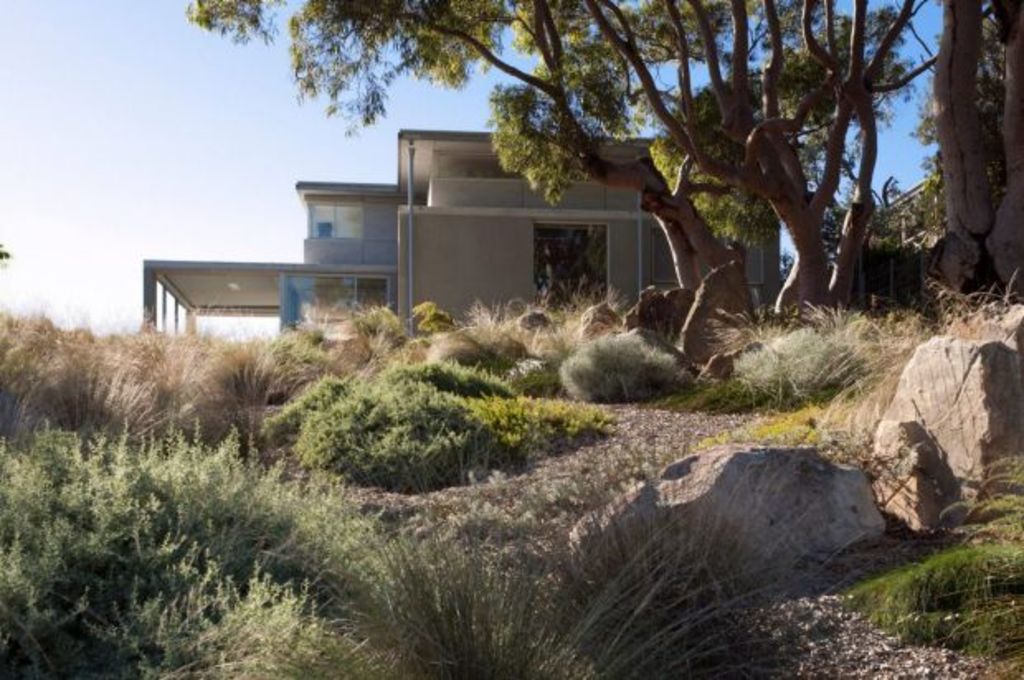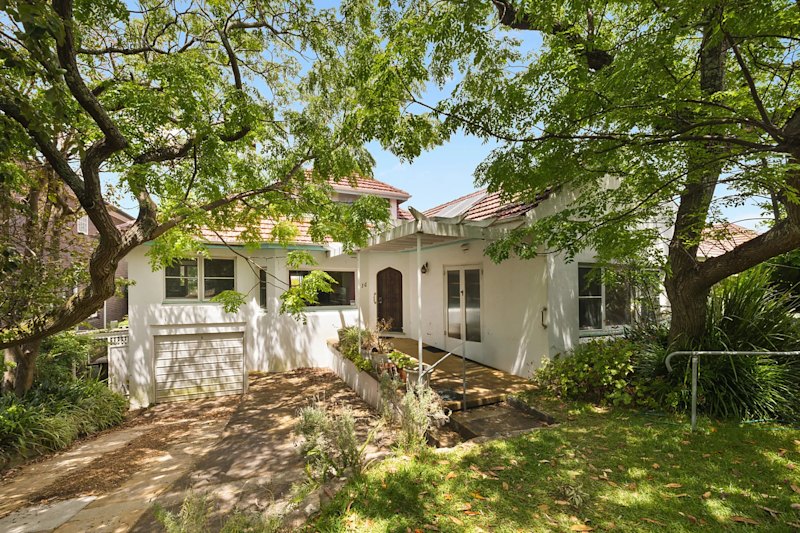Bundeena house designed for isolation with Japanese Zen principles

In the making of a tranquil Bundeena coastal house that has been compared to a secular temple, the landscape designer Ken Lamb and the house’s designer Julius Bokor, of Bokor Architecture and Interiors, referenced the “simple, relaxed and intuitive” principals of Japanese Zen.
To create an escape for a Sydney-based medico couple, Bokor tells how before ground was broken on the last vacant site on a street bordering Royal National Park, “we spent a lot of time there imagining where the house should be and where the windows should be to control the views”.
With road entry from what is an undisguisably suburban street, yet with an outlook to the east across broad acres of park wilderness to the Pacific, and in another direction across to the distant rooftops of the Port Hacking estuary settlements, the guiding idea was “to make a modest house that feels isolated”.
This was the purpose of the carefully arranged ambulatory “arrival sequence” that leads visitors through a Japanese-inspired entry gate, or Torii, and up the curving path that climbs the sand dune, passing sandstone boulders and native plantings on the way to the house.
Bokor says as random as the rock, grass and shrub arrangements appear, they took Lamb, “who trained as a sculptor, two days to position”.
The one large tree on the site, a mature Angophora, stands framed in a living room window and in sonorous contrast to Bokor’s square-set, skillion-roofed, double-storey, four bedroom house that he designed to have multi-functional rooms while maintaining “a humility about it in terms of scale and materiality”.
Rendered in pale cement wash, with recycled blackbutt flooring and “unfussy materials”, he says “the building is not pretentious. We don’t do pretentious”.
And although the appreciation of the Japanese aesthetic shared by client, landscaper and architect is there, it’s not self-conscious.
There are sliding screens fronting several Tokonama – or recessed alcoves in the sitting room.
There are touches of wood internally, and in the case of the band of horizontal timbering above the double-height living room, there is a built-in device to guarantee quietude. “It’s there for acoustic control,” says Bokor. “It’s there to break up sound and again, to introduce visual warmth.”
Another subliminal set-up is the way windows are arranged to break up the views.
Downstairs, the glazing is mainly tall, narrow verticals, “so you only see certain parts of the view”. As Bokor says, in Australian coastal design such restraint is unusual.
Upstairs, “where the outlooks are more panoramic, horizontal windows dominate”.
If Zen is also about effortless harmony then so in this house. “It’s simple. And together, the house and the garden make up a whole that I find very pleasing.”

Photo: Richard Glover
We recommend
We thought you might like
States
Capital Cities
Capital Cities - Rentals
Popular Areas
Allhomes
More
- © 2025, CoStar Group Inc.







